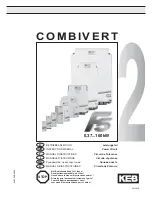
HD9084 HDTV Caption Encoder Manual
SERIAL CONTROL PROTOCOL
Page 4-17
4.5.
EXTENDED DATA SERVICES
Extended Data Services (XDS) information is encoded into Field 2 and is intended to supply program
related and other information to the viewer. XDS data can inform the viewer of such information as
current program title, length of show, type of show, time left in show, and V-Chip-compatible program
rating information.
The XDS output stream consists of a distinct XDS packet for each type of information. Each packet
consists of a 1 byte class, a 1 byte type, one or more informational characters, a 1 byte end of packet
code, and a 1 byte checksum.
XDS packets are stored in the article memory and output in the XDS data channel in Field 2. These
packets are placed into the XDS output queue in the order specified by the user and inserted into Field
2 according to the space available. CEA-608-B specifies that when there is caption or XDS information
in field 2, then there must be at least a null caption signal present in field 1 as well. When encoding into
field 2, the HD9084 automatically detects whether there is a caption signal present in field 1. If
necessary, it will turn on the Field 1 keyer automatically and turn it off again when upstream field 1
captions resume.
The computer uses an ASCII hex notation in describing the XDS packet id and data to the caption
encoder. For example, to specify the letter A enter a 4 followed by a 1 (the hex ASCII code for A is 41).
The XDS packets are deleted from memory when they have been transmitted the specified number of
times. XDS packets will be lost from the encoder’s memory in the event of a power loss. The HD9084
uses an advanced memory allocation scheme that allows it to store a virtually unlimited number of XDS
packets at one time. The only limit is the total amount of random access memory available.
Upstream XDS packets will be blocked in the output queue by packets of the same type.
4.5.1.
Input XDS Article
This command allows the user to input an XDS packet into the caption encoder’s article memory.
If an XDS packet with identical
edsid
exists it will be deleted and replaced with the new packet
definition.
Command:
^AP<sp>edsid<sp>rc<sp>data...data<cr>
Default:
none
The
edsid
parameter identifies the XDS packet id. The XDS packet can subsequently be referred to by
its packet id. If the XDS packet already exists, the new packet with the same id will replace the
previous XDS packet. The
edsid
is entered in ASCII hex notation. For example, to enter a packet id
with a class of 01h and a type of 23h, enter a 0 followed by a 1 followed by a 2 followed by a 3. The
leading zero of the class is optional.
The
rc
parameter identifies the number of times the packet will be repeated. Values of 9999 or FFFF
indicate that the packet should be repeated indefinitely. A packet’s repeat count will be decremented
each time it is output.
The parameter
data
is the information bytes of the packet. This data is entered in ASCII Hex format.
For example, to enter the letter A enter a 4 followed by a 1 (the hex ASCII code for A is 41)
USO
RESTRITO
Summary of Contents for hd9084
Page 2: ...This page left intentionally blank USO RESTRITO ...
Page 6: ...This page left intentionally blank USO RESTRITO ...
Page 18: ...HD9084 HDTV Caption Encoder Manual OVERVIEW This page left intentionally blank USO RESTRITO ...
Page 120: ...HD9084 HDTV Caption Encoder Manual GLOSSARY This page left intentionally blank USO RESTRITO ...
















































